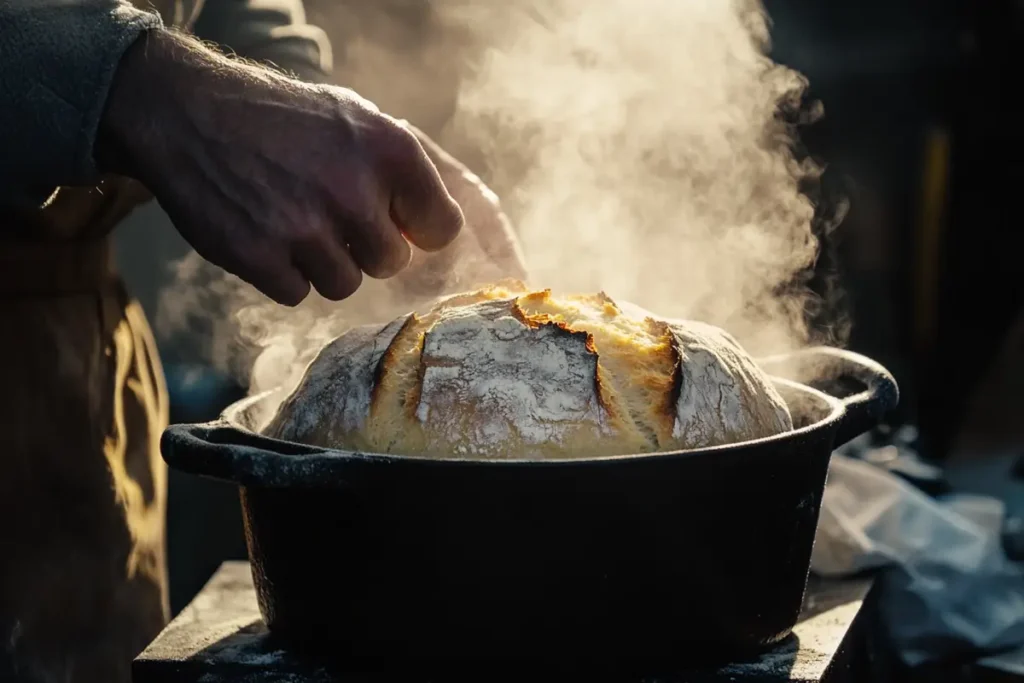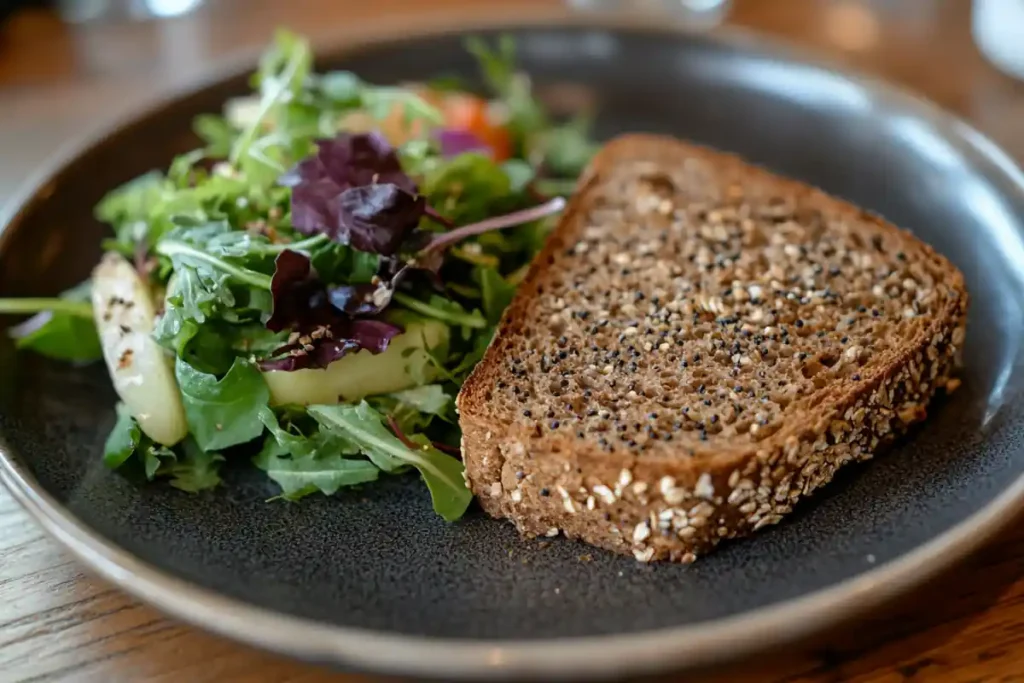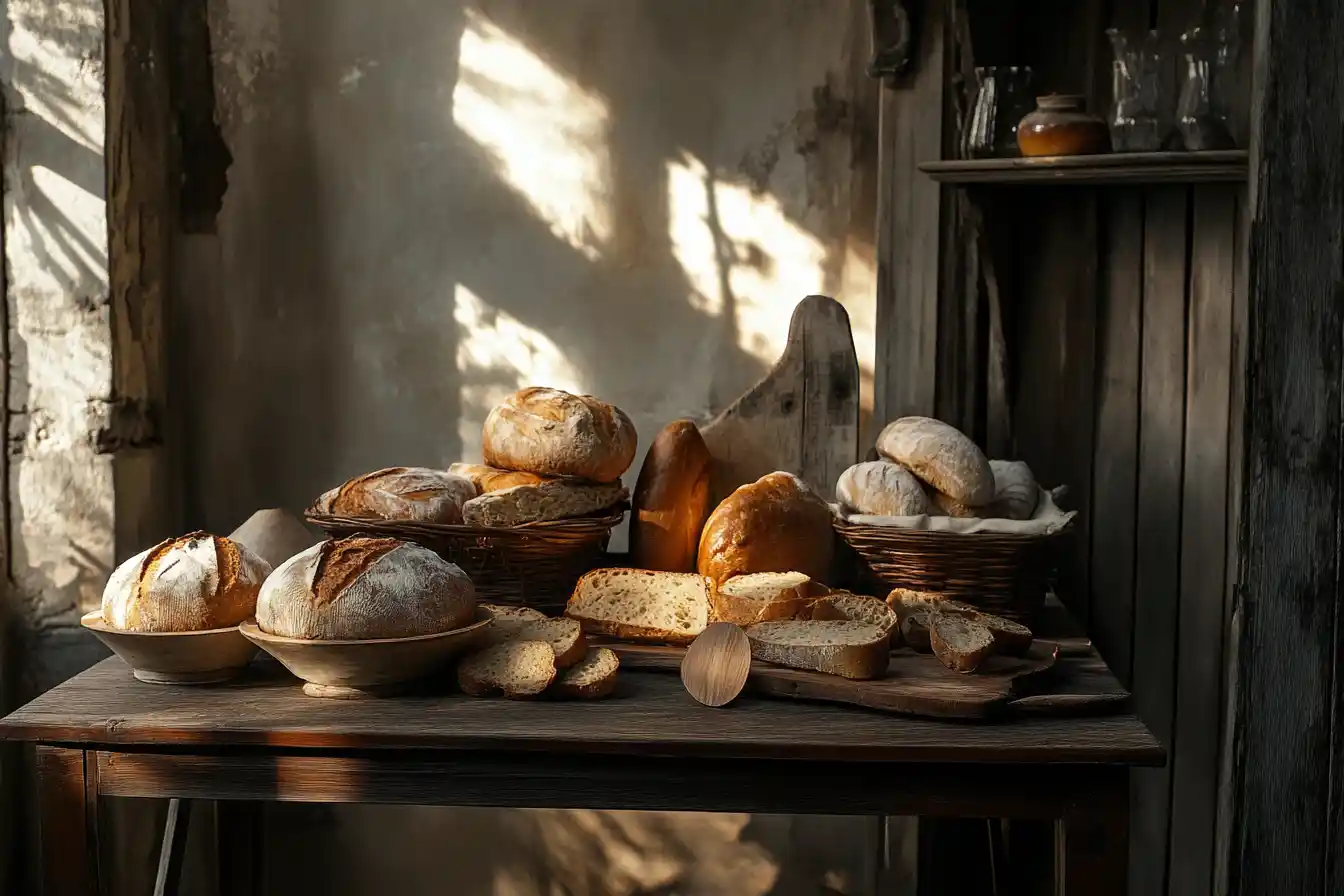This article explores what hard bread is called, examining various names and types. It covers regional differences and baking techniques. We also address common questions about this kind of baked good. Furthermore, we will examine its use in different culinary traditions.
Understanding What Is Hard Bread Called
The term hard bread is a broad category. Therefore, understanding what hard bread is called depends on the specific type and region. Basically, many names refer to this type of baked good. Chiefly, crusty bread is the most popular alternative name. Moreover, local names often add an additional layer of complexity.
Common Names for Hard Bread
Hard bread is often called crusty bread. This describes its tough exterior. Additionally, it is sometimes referred to as a dense loaf. Moreover, these names all point to similar types of baked goods. Indeed, these are some of the most common ways to identify this type of bread.
Regional Variations in Names
Different regions have their own terms for hard bread. For example, in some areas, it might be known by a local name, not widely used elsewhere. Consequently, understanding regional names can be helpful for bakers. Thus, knowing the location can help you identify the type of bread. Also, different linguistic traditions can contribute to varied naming conventions.
Moreover, local names often add an additional layer of complexity. Learn more about the nuances of What Is Hard Bread?.
Types of Hard Bread and Their Names
Many kinds of hard bread have their own distinct names. Specifically, these names often reflect the recipe and cultural traditions. Indeed, exploring these different types gives a better understanding of this type of bread. Furthermore, each type has its own unique qualities that set it apart.
Baguettes and French Bread
Baguettes are long, thin hard bread loaves. Furthermore, French bread is a similar type that is often slightly thicker. Generally, both terms are well-known around the world. Additionally, they both share the same characteristic crisp crust. However, subtle variations in technique can result in slightly different outcomes.
Sourdough’s Texture and Name
Sourdough is a type of bread with a typically firm texture. However, its specific hardness can vary. Because of its unique fermentation process, sourdough is usually known by that name, regardless of how hard it is. Indeed, the name emphasizes its flavor and fermentation. Moreover, the flavor profile is often a key factor when referring to this type of bread.
Italian Hard Bread Names
Italian hard bread comes in many forms. For example, ciabatta is known for its firm crust and large holes. Additionally, grissini are long, thin, and crisp breadsticks. Therefore, each name is associated with a distinct shape and texture. Likewise, these names reflect traditional baking practices in Italy.
Discover the intricacies of What Is the Longest Bread to Make?.
Baking Techniques Influencing Hard Bread Names

Baking techniques significantly impact the texture and classification of firm-textured breads. For example, longer baking times and higher temperatures create a harder crust and denser interior. Additionally, variations in dough preparation influence the names of these breads, highlighting the importance of these factors in defining their types.
The Role of Hydration
Hydration levels significantly affect the texture of firm-textured breads. A drier dough typically results in a firmer and denser loaf. This lower water content also influences the bread’s classification. The ratio of water to flour is a critical factor in determining the final outcome.
Temperature and Time
Baking temperature and time are also key. Higher temperatures and longer baking times produce a thicker, harder crust. Therefore, these are the techniques that differentiate hard breads from soft ones. Specifically, these factors play a crucial part in texture. In addition, preheating the oven properly is essential.
Special Equipment
Special baking equipment can significantly affect the outcome of firm-textured breads. For example, a Dutch oven is excellent for achieving a crusty loaf. Tools like baking stones or pizza peels can also simplify the baking process and enhance the bread’s final texture and quality.
Learn how ingredients like milk can impact bread in Why Do You Put Milk Instead of Water in Bread?.
Uses of Hard Bread and How Names Apply
The use of firm-textured loaves often shapes their perception. For instance, certain names are tied to specific pairings or culinary traditions. Understanding how a loaf is used can also clarify the naming of hard varieties. Additionally, these traditions influence naming conventions.
In Savory Dishes
It is frequently paired with savory foods. Specifically, it is used with soups, stews, and cheeses. Because of its texture, it doesn’t fall apart when dipped into liquids. Thus, these uses often influence how we refer to this bread. Moreover, its ability to hold up to sauces and dips is key.
With Sweet Items
While less common, it can also be eaten with sweet toppings. For example, it might be served with honey or jam. However, its savory pairings are more common. Therefore, names associated with it are often connected to those pairings. Additionally, toasted hardbread can be used as a base for sweet treats.
Hard Bread in Different Cultures
Cultures around the world have their own versions of hard bread. Specifically, these regional variations have led to diverse names. Indeed, the wide variety shows how important it is globally. Furthermore, each culture has adapted it to fit its local flavors and preferences.
European Hard Bread
Europe is known for its hardbread traditions. For example, baguettes and ciabatta are famous across the region. Additionally, each country has its own distinct names and types. Thus, Europe showcases a wide range of hard breads. Indeed, these European breads are influential worldwide.
Global Hard Bread Traditions
Hardbread traditions can be found globally. For instance, many African countries have similar types of baked goods. Furthermore, some Asian cultures also feature it as a part of their meals. Consequently, its versatility makes it a worldwide food. Also, many Latin American countries have distinct types.
Explore the challenges of creating firm loaves in What Are the Hardest Breads to Make?.
Health and Nutritional Aspects

Hardbread offers some health and nutritional benefits. Specifically, it provides complex carbohydrates for energy. Moreover, whole grain versions add fiber. Indeed, these qualities make it a valuable part of many people’s diets.
Carbohydrates
Hardbread is a good source of carbohydrates. Generally, these provide a sustained release of energy. Because of this, it is a staple in many diets. Thus, it is an important source of energy for many. Also, these carbohydrates fuel many daily activities.
Fiber Content
Whole grain hard bread contains a good amount of fiber. Comparatively, fiber aids in digestion and promotes fullness. Therefore, these are important benefits for consumers. Accordingly, this can also help regulate blood sugar levels. Furthermore, dietary fiber is crucial for overall wellness.
Hard Bread vs. Other Breads
It’s helpful to compare hardbread to other types . Specifically, this helps define its characteristics and names. Additionally, the comparison highlights the differences in texture. Moreover, this helps understand where hard one fits in the wider world of baking.
Hard Bread vs. Soft Bread
The Soft one has a tender, moist texture. Conversely, the hard one is firm and crusty. Therefore, their names reflect these major differences. Indeed, these two types of bread are very different from each other. Likewise, the baking processes used to create them are different.
Hard Bread vs. Flatbread
Flatbread is often thin and has a less developed crust. However, it is thicker with a much more noticeable crust. Consequently, their purposes and names are often very different. Thus, they have separate classifications. Furthermore, flatbread is typically used for different culinary purposes than hardbread.
Choosing the Right Hard Bread
Choosing the right hard one depends on the purpose. For example, some are better suited for soups while others are best for sandwiches. Specifically, knowing the differences helps with making the right selection. Additionally, considering flavor profiles and pairings also plays a key part.
For Pairing
For pairing with soups, a sturdy hard one is ideal. Conversely, a slightly softer one might be preferred for sandwiches. Accordingly, think about how it will be served. Thus, choosing the correct one depends on its purpose. Moreover, consider how the texture will interact with the other ingredients.
For Recipes
For specific recipes, selecting the right type of bread is essential. Some dishes require a dense loaf, while others work better with a lighter crumb. Certain varieties are also more suitable for soaking, making them ideal for specific culinary uses.
The Cultural Significance of Hard Bread
It is often holds cultural significance. Specifically, it can be part of religious or traditional meals. Additionally, it’s sometimes associated with specific celebrations. Indeed, it is an important part of many cultures, and hard bread is no exception.
In Traditional Meals
It is featured in numerous traditional meals. For instance, it might be a staple in a particular regional cuisine. Specifically, its use is often tied to historical practices. Moreover, it plays an important role in family meals.
In Celebrations
Some types of firm-textured bread hold special significance during celebrations. For instance, they may be prepared for holidays or to honor cultural traditions. These breads often play an important role in marking significant events, highlighting their symbolic importance.
Common Misconceptions
There are misconceptions about the names of firm-textured breads, often related to texture and freshness. Addressing these misunderstandings can help clarify the characteristics of these breads and promote a deeper appreciation of their variety.
How Freshness Affects Firm-Textured Breads
Fresh hard bread doesn’t need to be soft to be good. Indeed, its characteristic crust is a sign of freshness. Therefore, a crunchy crust is not an indication of staleness. Thus, this is an important distinction to understand. Also, this texture is a desired outcome of the baking process.
Understanding the Differences Between Crusty and Hard Bread
Not all crusty loaves qualify as hard bread. For instance, some may have a soft interior despite their firm crust. In contrast, truly dense loaves are defined by their consistent texture throughout. The name often depends on the loaf’s internal characteristics, with crumb density being a key factor in proper categorization.
Frequently Asked Questions (FAQs)
What is it called when bread is hard?
When it is hard, it’s often called crusty. This term reflects its firm exterior. Additionally, it may be described as a dense or firm loaf.
How long can you survive on Hardtack?
Hardtack, a type of hard bread, was historically used for survival. It’s not a long-term solution. However, its longevity makes it good for emergency situations.
What is a long hard bread called?
It is often called a baguette. This name is associated with its specific shape and crust. Furthermore, it is usually made with a lean dough.
What is hard Italian bread called?
It can be called ciabatta or grissini. Ciabatta is a loaf with large holes, and grissini are thin, crisp breadsticks. Consequently, both are classified as hard bread.
Conclusion
In conclusion, understanding what is hard bread called can reveal a fascinating variety of names. Commonly referred to as crusty bread, these loaves often have unique names based on their type or regional origin. Exploring these terms can enhance appreciation for the diversity of firm-textured breads. Whether it’s a baguette, ciabatta, or another variety, this type of bread holds an important place in many culinary traditions. Knowing the different names is beneficial for both bakers and bread enthusiasts alike.
Looking for more? Check out our other links for even greater insights and inspiration!

